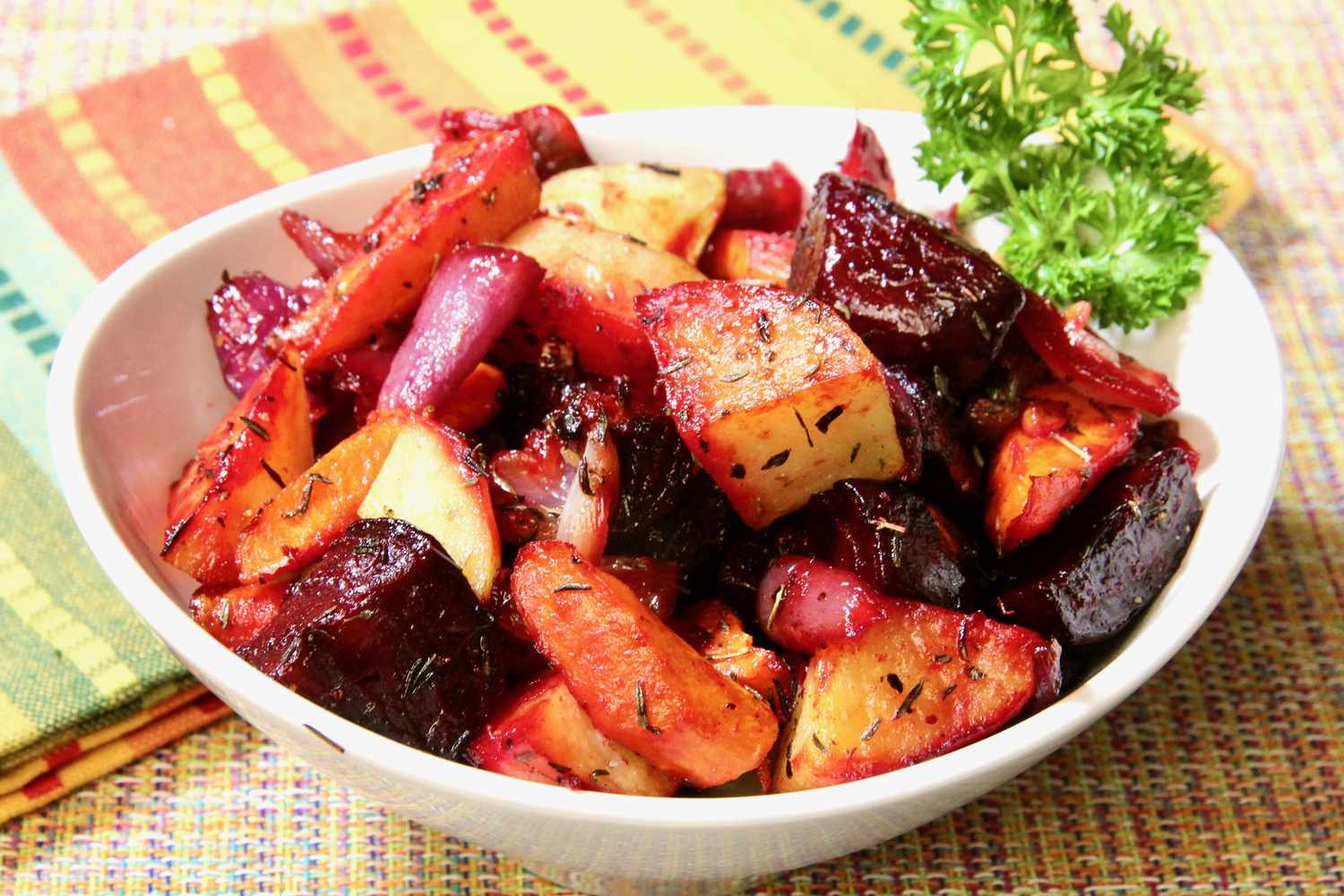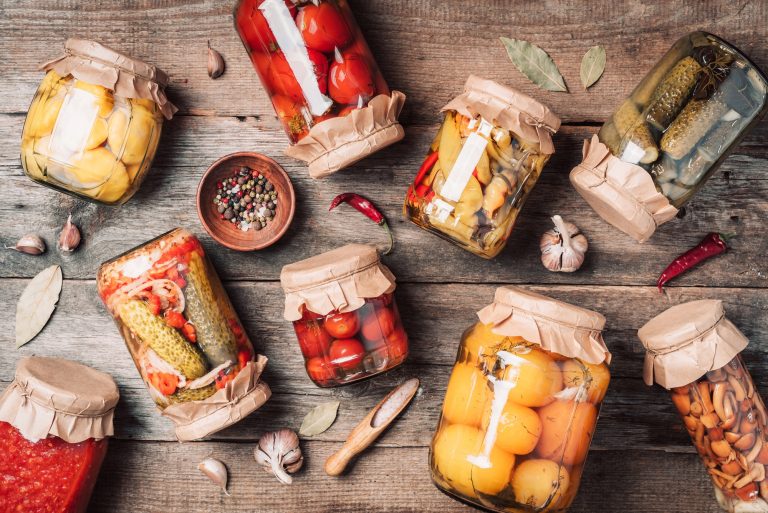Savory Roasted Root Vegetables: Preparation, Methods, and Serving Ideas
Root vegetables grow underground, storing nutrients in their edible roots. Common examples include carrots, potatoes, parsnips, beets, and turnips. Each has unique flavors and textures, making them versatile for various dishes. These vegetables are rich in vitamins, minerals, and fiber, contributing to a balanced diet. Choosing firm and blemish-free roots ensures the best taste and texture when roasting.
Benefits of Roasting
Roasting enhances the flavors and textures of root vegetables. High heat caramelizes natural sugars, producing a rich, savory taste with a slight sweetness. The vegetables develop crispy edges and a tender interior. Roasting also retains more nutrients compared to boiling, making it a healthier cooking method. Easy to prepare, roasted root vegetables complement many main dishes, from meats to plant-based options.
Choosing the Best Vegetables for Roasting
Seasonal Varieties
Using seasonal root vegetables ensures maximum flavor and freshness. In autumn and winter, opt for carrots, sweet potatoes, and butternut squash. During spring, look for beets and radishes. For summer, consider new potatoes and early carrots. Seasonal produce offers better taste and higher nutrient content, enhancing the quality of your roasted root vegetables.
Tips for Selecting Fresh Vegetables
To select fresh root vegetables, prioritize those with firm texture and vibrant colors. Avoid vegetables with blemishes, soft spots, or sprouts. Carrots should appear bright orange and be free of cracks. Choose potatoes that feel solid and have smooth skin. Beets should have a deep, uniform color without blemishes. For uniform roasting, pick vegetables of similar size to ensure even cooking. Selecting fresh, high-quality vegetables improves the flavor and texture of your roasted dish.
Preparation Techniques
Cleaning and Cutting
Clean root vegetables thoroughly to remove dirt. Use a vegetable brush to scrub the surface under running water. Peel tougher-skinned varieties like beets and turnips. Cut vegetables into uniform pieces. Slice carrots, potatoes, and parsnips into 1-inch chunks. Dice beets and turnips into ½-inch cubes. Consistent sizing ensures even roasting.
Seasoning for Maximum Flavor
Toss root vegetables with olive oil, salt, and pepper. This base enhances their natural taste. Add herbs like rosemary, thyme, and sage for depth. Include spices like paprika, cumin, or garlic powder to boost savoriness. Mix vegetables in a large bowl to coat evenly, then spread in a single layer on a baking sheet. Keep the layer thin to allow vegetables to roast crisply without steaming.
Roasting Methods
Oven Roasting
Oven roasting is the most common method for making savory roasted root vegetables. Preheat your oven to 400°F (204°C). Spread evenly-sized root vegetables (such as carrots, potatoes, and parsnips) on a baking sheet. Ensure the vegetables are not crowded, as this can prevent proper roasting. Toss them with olive oil, salt, and pepper before placing them in the oven.
Roast for about 25 to 35 minutes. Use a spatula to flip the vegetables halfway through the cooking time for a uniform golden-brown color. If the pieces are larger, adjust the roasting time accordingly. Check for doneness by piercing the vegetables with a fork; they should be tender and slightly crispy.
Alternative Roasting Techniques
Alternative roasting techniques offer flexibility if an oven isn’t available. Use an air fryer to achieve similar results. Preheat the air fryer to 375°F (190°C). Place the seasoned root vegetables in the basket in a single layer. Cook for 20 to 25 minutes, shaking the basket halfway through to ensure even cooking.
A stovetop roasting pan can also be effective. Heat the pan over medium heat. Add a small amount of oil and the cut vegetables. Cover the pan and cook for 15 to 20 minutes, stirring occasionally to prevent burning and to promote even roasting. This method is ideal for quick, small-batch cooking.
Finally, grill roasting offers a smoky flavor. Use a grill basket to hold the seasoned vegetables and place it on preheated grill grates over medium-high heat. Grill for 20 to 30 minutes, stirring periodically to achieve an even char.
Serving and Pairing Ideas
Accompaniments
Savory roasted root vegetables complement numerous dishes. Pair them with proteins like roasted chicken, grilled steak, or baked fish to create balanced meals. Serve them alongside grain dishes, such as quinoa, farro, or wild rice, for added texture. Add a fresh salad, like a mixed greens or arugula salad, to provide a refreshing contrast. These vegetables also pair well with creamy dips (e.g., hummus or tzatziki) which enhance their natural flavors.
Creative Serving Suggestions
Use roasted root vegetables in innovative ways to elevate your meals. Incorporate them into a hearty vegetable stew to add depth and richness. Top pizzas with roasted root vegetable slices for a unique twist. Create a savory tart, using a puff pastry base, and layer it with various roasted roots. Mix them into grain bowls for a nutrient-packed lunch. Serve them as appetizers with a drizzle of balsamic glaze or a sprinkle of fresh herbs for an elegant touch.
Conclusion
Savory roasted root vegetables offer a versatile and nutritious addition to your meals. With various roasting methods at your disposal you can easily customize the flavors and textures to suit your preferences. Pair them with proteins grains or salads to create balanced and satisfying dishes. Don’t hesitate to get creative by incorporating these vegetables into stews pizzas or grain bowls. Embrace the simplicity and richness of roasted root vegetables and elevate your culinary repertoire with these delightful and wholesome options.






